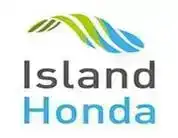Hula advocates urge full support for Maui’s proposed Hālau of ʻOiwi Art

Many of the more than 50 people who testified during a budget committee meeting on Friday voiced support for funding of Hālau of ʻŌiwi Art, a center dedicated to the study, practice, celebration and perpetuation of hula and various ‘ōiwi arts connected to hula.
The proposed multi-million project is described as a “first of its kind” and the “largest investment by any county or the state to establish a permanent place for hula and associated ʻōiwi arts.”
The center’s proposed location is adjacent to the new four-level parking structure in Wailuku Town, currently under construction, at the corner of Church and Vineyard Streets.
Francine “Aunty Mopsy” Aarona who graduated as a kumu hula in 1974 under Aunty Maiki Aiu Lake said, “Maui has a chance to be the leader of our state and global community; and I ask that you be the first county to adopt this construction, this venue, which is a lot of money, but long overdue.”
“Our chants and songs tell the story of our heritage and our kuleana to the ʻāina and our way of life. Through the accomplishments of our kumu hula here on Maui, and the musicians, they tell and celebrate the stories of our home, they sing of its beauty, and they bring both joy and pride to our larger community,” said Aarona.

Nāpua Greig, kumu hula of Hālau Nā Lei Kaumaka O Uka shed tears of joy during her testimony. “I am elated. I am just overjoyed that I can be here today and lend my voice to strong support [of] full funding of the Hālau of ʻŌiwi Art.”
In 2016, she sat with her haumana, and alongside fellow kumu hula who were being recognized for keiki hula accomplishments.
“We were receiving resolutions from the county council, and I will never forget that day we also shared the chamber with the Little League team that just came home from winning a national tournament,” Greig recalled.
“I remember very distinctly, [then] Councilman Victorino, today our mayor, reading the resolution, and in his read he said: hula is the most recognizable art form of Hawaiʻi to the world… and I sat here in the council chambers and I thought–There’s a distinct difference between this Little League team and us. See, we can understand that our Little League team, our soccer teams, our Pop Warner football teams, our robotics teams have gone from Maui, throughout the world, winning all of these competitions–because they have places,” said Greig.
“There’s a baseball field in every district of our county. There’s a football field. There’s basketball courts. There’s all of these spaces for all of these activities to take place, but there is no space for hula.”
Nāpua Greig, kumu hula of Hālau Nā Lei Kaumaka O Uka

Testifier, Dean Frampton said he “was struck by the simplicity,” of that thought. Looking through his own personal lens, he reflected upon his time canoe paddling. The Hawaiian Canoe Club, he said, operated out of a shack at Kahului Harbor, and eventually moved to a spot by the old Chart House restaurant.
“Fortunately, back in the mid 1990s, Maui County had the foresight to fund that facility, and A&B had the generosity to give the land. The county made an investment back then, and today it continues to pay dividends. That hale has become a foundation, a pillar, continuing to preserve, protect, and enhance Hawaiian cultural values. It has literally touched the lives of thousands of kids in our community,” said Frampton as he advocated in support of similar government backing for the hula community.
Keani Rawlins-Fernandez, Chair of the Council Committee on Budget, Finance, and Economic Development also thanked Greig for making that declaration. “You’re the first person I ever heard state that we should have a place for hula in every district, and after that it stuck with me and I whole heartedly agree.”
Greig noted that many kumu hula have taken on second jobs and sacrificed the income of their ʻohana to be able to provide some kind of space for hula. “But as we see today, our brothers and sisters are being priced out of the housing market. In a matter of two years, there is fear that fellow kumu hula will find it even more difficult to keep up with these insurmountable leases,” said Greig.
“Now I urge you to be the model, the example, the blue print, the beacon for all of Hawaiʻi to follow. I urge when you approach the matter of funding this center, and others like it in the future, I ask you to not think of equal funding, but instead realize we are playing catch-up.”
Nāpua Greig, kumu hula of Hālau Nā Lei Kaumaka O Uka
She pointed to areas like Autearoa (New Zealand) where they have marae (cultural centers / meeting houses) in every community. “Our Maori brothers and sisters have places where their culture can thrive. Today, whatever is happening culturally is at the hands of each individual kumu hula. They are my heroes because they sacrifice daily to make sure, all this time, that we’ve had places, that we have opportunities, because we haven’t had support from any kind of government anything, to do what we’ve been doing,” said Greig.

Founded in 1996, Greigʻs Hālau Nā Lei Kaumaka O Uka celebrates its 26th year practicing hula in Upcountry, Maui. “Today my hālau practices in an outdoor pavilion in Waiohuli, open to the elements. They’re freezing cold, because we have nothing Upcountry. We have no commercial space to even rent–we don’t even have that option. So to have a place is just so, so important to the future of where we are going in hula,” said Greig.
Greig’s sister and fellow kumu, Kahulu Maluo-Pearson of Hālau Kamaluokaleihulu said, “I want to believe that my mother had the foresight and knew how hula would forever influence my life–to the point where hālau and hula was the only activity that I was allowed to do.”
Maluo-Pearson, along with her sister, earned their uniki rights to become kumu under Kumu Hōkūlani Holt. “My sister and I learned very quickly that a huge challenge every hālau deals with is finding a home–securing a place where your students feel safe, where the kumu hula feel safe. We went through years of moving from one facility to another.”
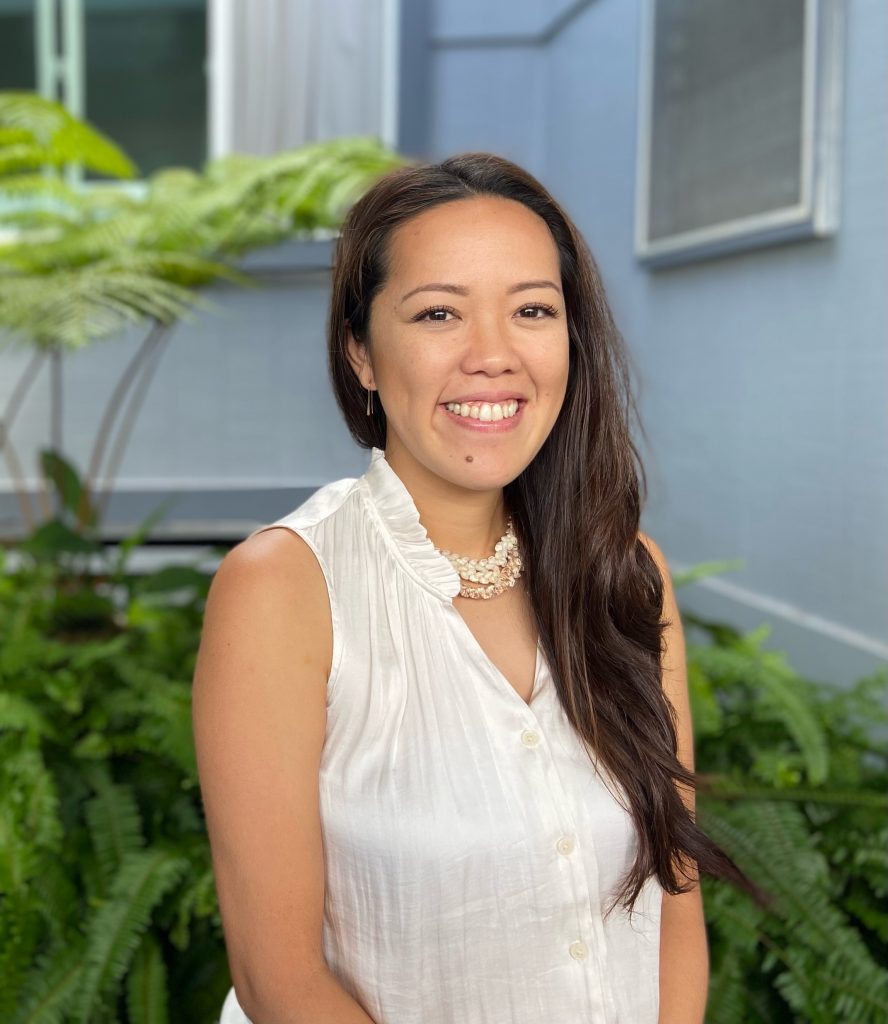
Uʻilani Tanigawa Lum, an attorney and hula practitioner testified on Friday in support of the Hālau of ʻŌiwi Art. She spent years dancing for sisters Nāpua Greig and Kahulu Maluo-Pearson in Upcountry, Maui.
“My time in hālau was formative, not only as a young woman, but also served as a catalyst for my passion for justice as well as my work as an attorney,” said Lum. “My motivation was simple–I did not understand why it was so hard to practice culture in our island home.”
“While I have fond memories of getting splinters from the floors in Hāliʻimaile, learning about having light feet like Keʻelikolani when dancing on a creaky floor, or doing duckwalks around school cafeterias, and rolling out the carpet at Aunty Hulu’s garage for practice as a six year old–I think we must do more to support hula in our communities. We must invest in that which makes our home and island so special.”
-Uʻilani Tanigawa Lum
Momilani Awo, who was born and raised on Maui said, “For as long as I can remember, hula was a part of my family. My mom’s name is Pāʻū. My grandma must have thought and wanted to see her future in the world of hula… Her hula life began at the age of 8. Her hula lessons were held at homes, in garages, a church hall and a cafeteria–wherever her kumu could find space.”
Awo, who learned the roots of hula in Pāʻū o Hi’iaka, said, “The importance of your role in approving the full funding of Hālau of ʻŌiwi Art is a significant and tangible recognition of the value of hula traditions, and it’s inspiration for Hawaiʻi and the world. Our descendants will thank you.”

Carmen Hulu Lindsey, chair of the Board of Trustees of the Office of Hawaiian Affairs, and mother to both Greig and Maluo-Pearson, said, “I built a hālau for my daughters, then our neighbors complained of the excessive traffic on hālau days. The kumu hula do not charge enough to pay for rented spaces, yet our county has not made it a priority to invest in hula, which ultimately is an investment in our community.” She said the Hālau of ʻŌiwi Art would provide a space dedicated to and designed for hula, creating a reliable space for education, performance, preservation, and excellence of art and culture.
“Hula is a constitutionally protected tradition and customary practice, and is not only integral to kanaka maoli, but to the entire County of Maui as well. Can you imagine a Maui without hula? Who tells the story of our history, of our home, of our ʻohana, our love–and bring both joy and pride to our larger community?”
Carmen Hulu Lindsey

Kaponoʻai Molitau, Kumu Hula of Hālau Nā Hanona Kūlike ʻo Piʻilani and owner of Native Intelligence LLC in Wailuku was among the many kumu who testified on Friday.
As a kumu hula in Hawaiʻi for the past 28 years, and educating hundreds of members of the Maui Nui community Molitau said, “The Hālau of ʻŌiwi Art will provide a long overdue support for the culture and practitioners that make our home nō ka ʻoi… Our hālau hula on Maui have brought so much joy and pride to our island home, and with the establishment of the Hālau of ʻŌiwi Art, this level of excellence will continue to support and celebrate the arts and practices of our home,” said Molitau.
“Providing such a place, dedicated and designed through the lens of hula, breeds a visible and reliable space for education, performance, preservation, and the excellence of art and culture in our own home,” said Molitau. “As a kumu hula, the space is not only an investment for the near future, but will have lasting impacts on our community’s identity for generations to come.”

Cody Pueo Pata, cultural advisor to the Mayor, provided personal testimony expressing full support for complete funding for the Hālau of ʻŌiwi Art.
“Training found me living with my masters for extended periods of time,” said Pata, who began dancing hula at the age of 16 under Nona Kaluhiokalani, and her master Uncle George Naʻope. But part of his training was studying under other masters, altogether numbering seven–five in hula, and two in other arts and traditions.
“Aside from their own homes, not one of my masters had a permanent space to convey their teachings. We were migratory in where we practiced, and adaptable in how we used truly varied and often times challenging spaces,” said Pata, who for the past two decades has served as kumu of his own Hālau Hula ʻo Ka Malama Mahilani.
“As kumu hula and practitioners, we have been resigned to bearing the complete burden of procuring safe and conducive spaces in which we can teach, and through which we can pass on the truly rich and unique knowledge and traditions that we have inherited through our masters.”
-Cody Pueo Pata
“The monumental challenges that we face are some of the same ones faced by so many generations of practitioners and masters before us. We endured because of our deep commitment to kuleana and we have always strived for complete competence and mastery despite various types of adversity,” said Pata.
“All of us who support the Hālau of ʻŌiwi Art are certain that such a facility will most definitely have a huge and positive impact on the practitioners who will be able to call this space home for their traditions. The effects of which will ripple down to the next generations for the betterment of all of Maui County, Hawaiʻi, and the world,” said Pata, who is also a member of Hui Makahikina, and Maui’s hui of kumu hula.
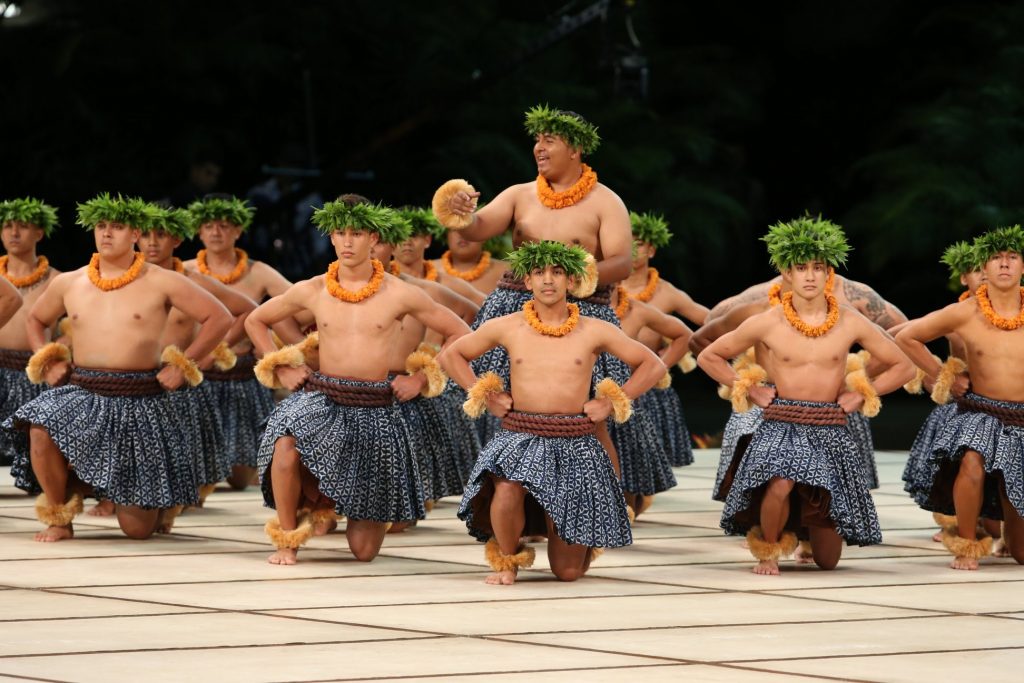
Haunani Paredes, alongside her husband, ʻIliahi, have been teaching hula with Hālau Kekuaokalā’au’ala’iliahi for 17 years. The couple teaches more than 250 students, most of them ages 13 and under.
“We have become parents of not just our biological children–we have two ourselves–but of all of our students, and we are just so proud of each and every one of them. They come to us at the tender age of three years old and they come from all walks of life. We not only teach hula, but we teach life lessons within our hālau.”
Haunani Paredes
“We are gifted with the trust from other parents to educate their keiki–their pride and joy–through Hālau of ʻŌiwi Art and this structure, we can make that more possible,” she said. “It is our hope that we can have this structure also in different communities in Maui County so that everybody can benefit. So this is that start of that.”
A look back- honoring a gathering place
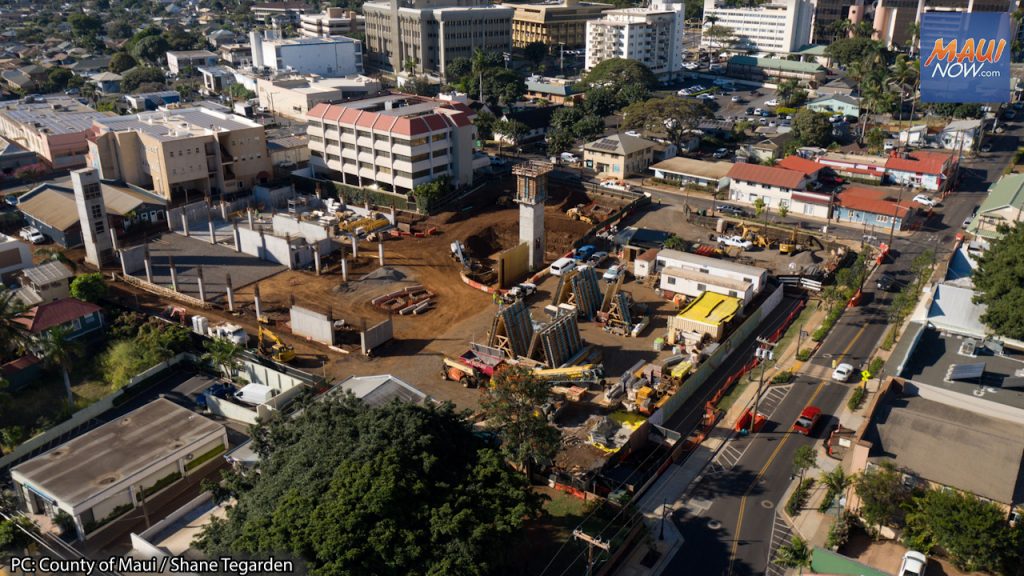
Ashley Awakea Lindsey, a resident of Wailuku, and former chair of the Maui Redevelopment Agency said, “In the beginning of my term in the MRA… we were envisioning Wailuku–what it was, what it is, and what direction it should go from here. We learned that historically, there was a concentration of wahine managed loʻi kalo, and this specific ʻāina where the Hālau of ʻŌiwi Art will be, was one of the largest loʻi kalo managed by wahine in Wailuku. People came out of the woodworks with their memories of Wailuku–from the old fairgrounds, the crack seed store, National Dollar, O’oka’s, parades, hotels, events and more. Wailuku was the ‘big city.'”
“After all the nostalgic memories of what Wailuku was, we came to the reality of what Wailuku is at the present time,” said Lindsey.
“We knew that Wailuku was no longer the gathering place it was… many small businesses were having a hard time staying open, and little was left to honor the culture or native people of this place,” said Lindsey.
“Then in front of us was an opportunity, coming to us in the form of what most of us know as a parking lot–something needed in Wailuku at the time, and a project that’s been in the works for longer than anyone should be proud of,” she said.
“To the common eye, it looked like nothing beyond the monotony of government jobs, medical care, and judiciary business. But what we saw as MRA members, was not a parking lot–it was an opportunity to make Wailuku a gathering place again through the second phase of the project, the Civic Center. With community input, we were presented with great ideas–a grocery store, a food truck hub, children’s playground, interactive water features, event venues, and more. It had functional design elements honoring Nā Wai ʻEha, loʻi kalo, and mana wahine of Maui,” said Lindsey.
“We didn’t want another parking lot. We wanted this. We wanted a gathering place–something that honors Wailuku, something that honors our nostalgic memories of this place, something that honors the kanaka ʻoiwi, something that brings life and culture back to Wailuku, and something the community can stand behind. The Hālau of ʻŌiwi Art is more than anything we could have dreamed of.”
Ashley Awakea Lindsey

Kumu Hula, Hōkūlani Holt, of Pāʻū o Hi’iaka reflected upon the inclusiveness of hula and the importance of hula in her genealogy.
“Wailuku is my river, Kaehu is my shoreline, and Maui is my homeland,” said Holt. “Hula has always been in my life. My hula descends from a matrilineal line of kumu hula of Maui. I am because of them,” she said.
“Hula is community, and the community is where hula thrives.”
Hōkūlani Holt
Holt noted that there are more than 25 hālau hula in Maui Nui, each of which provide Hawaiian cultural learning for all ages, ethnicities, religions, genders, and physical capabilities.
“Hula shares its knowledge and learning with everyone, whether you are five or 85, hula can be for you. Whether you lived here for generations, or arrived last month, hula can be for you. Whether you pray to Kāne, Buddha, your ancestors, or a Heavenly Father, hula can be for your too. Hula is for everyone,” said Holt. “A hula student will learn how to live well on our island home. As a cultural practice, hula is designed to do just that–to teach land and ocean stewardship, to teach values and behaviors like kōkua, laulima or cooperation, hōʻihi or respect, and mālama–to care for things.”
When asked about who would benefit from the center, Holt said, “I see it as encompassing what we all are about as a community and as Maui Nui and as a state–and that is to help people of appreciate their living in Hawaiʻi. Hula is done everywhere in the world, but you cannot know hula unless you are here in Hawaiʻi in order to know where the mele, where the hula comes from. If you don’t come to Hawaiʻi, it has no meaning. So for me, it is to provide the opportunity for people to appreciate the specialty that is Hawaiʻi–and with that specialty comes the way it is delivered to the rest of the world through its arts,” said Holt.
“As a cultural center for our community and the world, the Hālau of ʻŌiwi Art will inspire connection and uphold cultural excellence, which is inherent in hula,” said Holt.
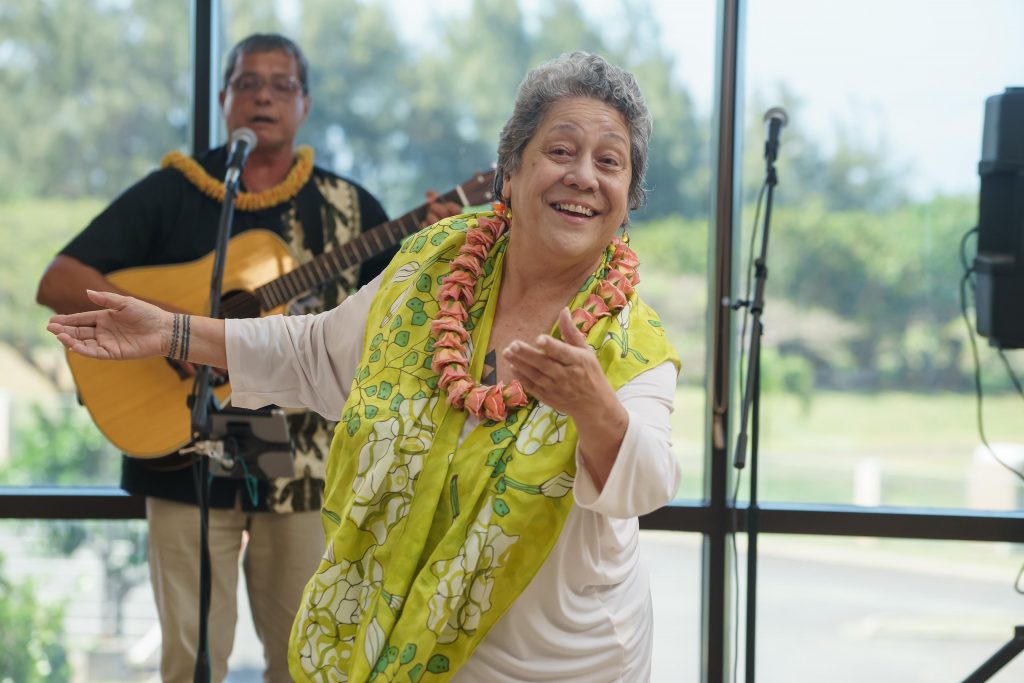
Also included in the Mayor’s proposed budget is $200,000 to support Hālau Keʻalaokamaile’s capital campaign. Committee members asked if the two items would be competing for County funds.
Holt said she had conversations with Kealiʻi [Reichel], who submitted a letter of support for the Hālau of ʻŌiwi Art. “In his letter of support, he also shared that it is all about all of us, not one or the other. And because his particular area is also focusing on agro-forestry, and agro-food sources, that too is an additional support to what we want to do in hula, no matter where we are.”
According to county officials, there is a need for full funding now in order to provide consistency and commitment for planning purposes.
“We also need to demonstrate our commitment for federal funding purposes… with the mid-term elections coming up, the timing is really right to access that funding prior to any possible changes occurring at the federal level in terms of the makeup of congress,” county officials said.
County officials say that if funding is granted, planning and design will move forward, which is expected to take approximately 14 months. At the completion of that, the County would be putting the project up for construction bids with the anticipation that construction would be completed in early 2026.
Planning has been initiated in the conceptual form, but there will be additional opportunities for outreach and discussion with the kumu as well.





